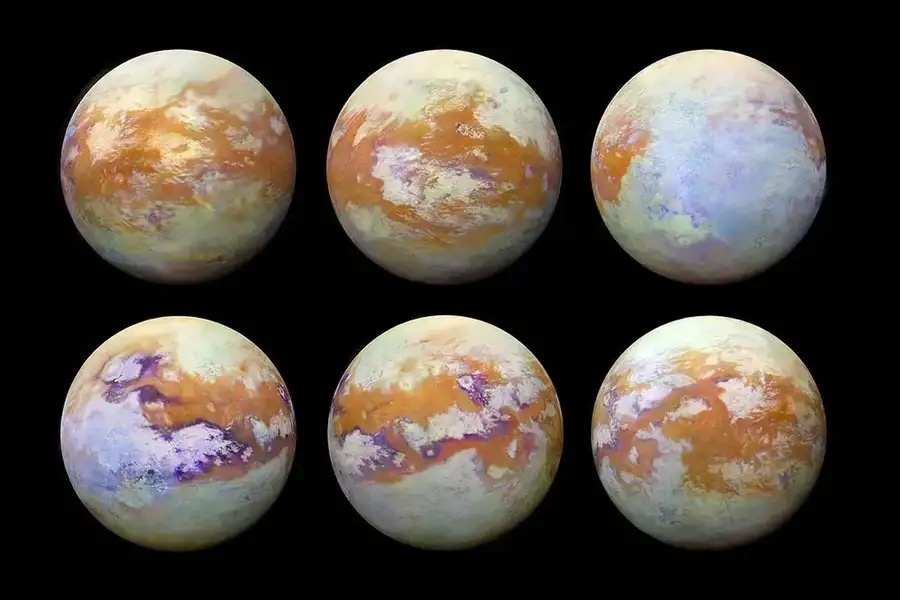15.01.2024
Titan’s methane seas have ephemeral “magic islands” that have baffled scientists for years. They may be made of odd, porous clumps of snow

nfrared images of Saturn’s icy moon Titan
NASA/JPL-Caltech/Stéphane Le Mouélic, Virginia Pasek
The seas of Saturn’s moon Titan have weird “magic islands” that seem to appear and disappear over the course of hours to weeks. These so-called islands might actually be porous, sponge-like clumps of snow that slowly fill up with fluid and then sink.
Titan’s thick atmosphere is full of complex organic molecules that can clump together and fall down to the moon’s surface like snow. Xinting Yu at the University of Texas at San Antonio and her colleagues thought the “snow” could be responsible for the magic islands. To test their idea, they used what we know about these atmospheric compounds and how they are expected to interact with Titan’s seas.
Typically, we expect any solids on the surfaces of these seas to sink immediately because the liquid on Titan is methane rather than water. While water molecules tend to cling to one another and push away other materials, methane easily grabs on to other molecules, so a pool of liquid methane has very little surface tension.
“Water molecules just love themselves to the exclusion of some types of molecules,” says Michael Malaska at NASA’s Jet Propulsion Laboratory in California, who was not involved in this work. “But put methane on the same surface and it will crawl all over.” That means that the methane oceans and lakes on Titan should immediately swallow up any solids, even those that might otherwise be expected to float.
But that clearly doesn’t happen with the magic islands, which appeared as ephemeral bright spots in observations from the Cassini spacecraft. “For us to see the magic islands, they can’t just float for a second and then sink,” Yu said in a statement. “They have to float for some time, but not for forever, either.”
The researchers found a solution to this problem: if large chunks of snow amassed on the shore, they could form ices that are full of holes, like sponges. When these porous “icebergs” broke off from the land, they could float on Titan’s seas for long enough to match the Cassini observations. This would work if, the researchers calculated, the sponge-like structures contained enough empty space – a minimum of about 25 to 50 per cent depending on the exact composition of the ice.
This doesn’t mean that the mysterious islands are definitely porous icebergs, though. “We are narrowing the different scenarios for the magic islands, but we still don’t yet know the answer,” says Malaska. Other possible explanations include bubbles of nitrogen gas, waves caused by wind or solid sediments in the oceans. But this does provide evidence that Titan’s transitory islands could actually be floating matter from this strange world’s atmosphere.
Quelle: NewScientist
